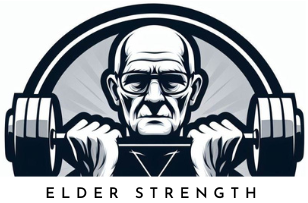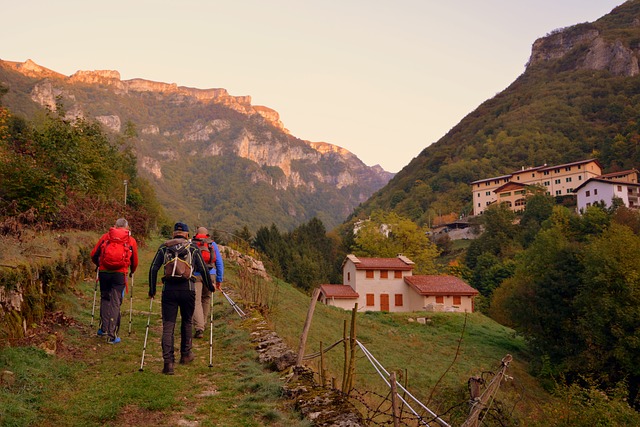Hiking is an excellent form of low impact exercise for seniors. Trekking poles can make hiking safer and more enjoyable so in this guide, I’ll help you find the best hiking sticks for seniors.
Hiking is a popular form of exercise among seniors and for a good reason. Hiking has been associated with improved physical and mental health.
We are built for long walks and hiking is probably one of the most natural forms of exercise humans can do. There is no better way to spend your time than walking and enjoying the wonders of nature. Hiking is also a great way to do some creative thinking.
The best part about hiking is that it can be done in different kinds of environments for new experiences. If you are into hiking you know how great it feels to go for a hike in a foreign country or completely different kind of environment.
In a hurry? Here’s my recommendation for the best hiking poles:
You can find great hiking trails all over the world ranging from the great national parks of America to the deserts of Australia and from the hills of Lapland to the Savannahs of Africa.
There are fascinating nature, animals and landscapes to see everywhere. In my opinion, hiking is one of the best ways to actually experience a foreign environment.
Hiking is most effective when done in a hilly environment. The natural inclines and changes in elevation are perfect for challenging your leg muscles and cardiovascular system.
As we age hiking in hilly terrains can become more straining, especially on longer hikes with a heavy backpack. This is where trekking poles or hiking sticks become very useful.
A trekking stick or sticks help you take some of the weight of your legs because you can use your upper body to help in tough spots. If you noticed I said stick or sticks, you can use a single sturdy stick or a pair of lightweight poles to help with trekking.
Why Use Trekking Poles?
So should you actually use a hiking stick or trekking poles? Well, I would say most seniors will benefit greatly from using them. The greatest benefit is that they take a little bit of weight and work on your legs.
Our strength and endurance tend to decrease with age. While I generally advise against using any form of crutches as they will simply make your muscles weaker, trekking poles are an exception.
This is because trekking involves extremely long exercise times, a hike can last for several days after all. With this kind of exercise preventing any kind of overuse injury, blisters, pain, and discomfort become the most important part.
Even if you hike very slowly, your feet, knees, and hip joints will go through thousands of movements per hour. Any weight you can take of your legs will reduce the wear and tear on your joints.
Aging also affects your mobility and balance, which means that steep hills and rough terrain become much more dangerous to trek through. Trekking poles are great for offering additional stability when going over difficult terrains like steep decline or boulders.
Finally, trekking poles allow you to include your upper body in the exercise. Using your arms for assistance while hiking will improve circulation and strength in the arms, shoulder and the large muscles of your upper back. This is why Nordic walking is so effective.
So essentially using trekking poles makes hiking a full-body exercise that improves your safety and reduces the risking of getting overuse injuries in your joints. So using them is wise for older adults especially.
What To Look For In a Trekking Pole?
So what should you look for in a trekking pole for seniors? Well, there are a couple of things that can make using a trekking pole more enjoyable.
The first thing is the adjustability. Naturally, the same length of a trekking pole is not perfect for everyone. Your height and personal dimensions affect what length your hiking poles should be.
Adjustability is also important because the optimal length of the pole will vary depending on the use. For example, when hiking a long incline, you want to have a bit shorter sticks and on a long decline, you want slightly longer sticks so that you can also keep the point of support in front of you.
Since you are going to haul the trekking poles with you through the whole hike along with your other hiking gear, it’s wise to pick as light poles as possible. Every gram counts on long hikes as you surely know.
Finally, my recommendation is to get collapsible poles that are easy to assemble when needed. This way you don’t have to constantly use and carry the poles. You can simply strap them on your backpack when you don’t need them.
Best Trekking Poles For Seniors
My recommendation for trekking poles are the Koviti Trekking Poles. They are ultralight collapsible trekking poles with included tips for different trekking conditions.

The Koviti trekking pole pack includes two poles so you don’t have to buy separate sticks if you want to use two poles. If you prefer using a single-pole, don’t worry, the 2-pack is very affordable so you always have a spare in case you break or lose the other one.
The poles are collapsible so they take up very little space. When not in use they are very easy to store inside or strapped to your backpack. When collapsed the length is only 13.3 inches. They are also super lightweight weighing only 9 ounces each.
The poles are fully adjustable and will accommodate anyone from tall men to short women and kids (43 to 53 inches). The adjusting system uses an innovative flip-lock and metal stopper system that makes them very easy to adjust and secure. This means you can also easily adjust the for different terrains.
The sticks are made out of durable 7075 Aluminum which makes them as durable as steel at half the weight. They are also tougher than carbon fiber poles so you can trust their durability in a tight spot.
The poles feature ergonomic synthetic handles with adjustable wrist straps. This is important for optimal force transfer and avoiding chaffing.
Finally, the pack includes 4 different kinds of tips. The bare metal tips are meant for use on gravel or ice. Thet tip is pointy and hard enough to give a secure grip on ice and hard gravel.
The mud basket tip is optimal for soft sand and mud as it involves a collar that prevents the pole from sinking too deep into the soft terrain. The snow basket is similar bat has an even wider collar to offer support in soft snow.
The asphalt tips are optimal for hard surfaces like asphalt, concrete, and rocky environments. Is essentially a soft rubber tip that relies on friction instead of penetrating into the surface. The pack also includes storage tips that protect your backpack from the pointy tips.
All and all these are great and affordable trekking poles with all the features I would recommend you have in trekking poles. They are lightweight, collapsible and adjustable. They also have great reviews (4.4 out of 5.0) from users on Amazon so you can be sure they don’t have quality or durability issues.
Benefits Of Hiking For Seniors
In case you are wondering if hiking is healthy for seniors I’m glad to tell you that it most definitely is. Hiking is a great form of low impact cardiovascular exercise.
Because it involves extended times of exercise on relatively low heart rates, it’s perfect for improving your cardiovascular health, improving metabolism and burning fat. Hiking will help you keep your blood sugar and cholesterol in control.
Hiking doesn’t require any special athletic skills so anyone without severe disabilities can do it. That said hiking involves walking in varying terrains that are perfect for challenging your balance skills.
Especially hiking in hilly terrain will help you maintain the muscle mass and strength in your legs. While cardiovascular endurance exercise like hiking is not perfect for this, it’s better than nothing.
I still always recommend you combine your favorite forms of endurance exercise with some form of strength training to get the benefits of both forms of exercise.
Strength training is superior for reducing age-related muscle loss and improving balance while cardio is superior for heart health.
Conclusion
That’s it for the day. I hope you found my recommendation useful and enjoyed reading this article. If you have any questions please leave them in the comments section below and I’ll promise to get back to you as soon as possible.
Hiking is an activity people of all ages can enjoy. Aging can make hiking feel more strenuous and cause strain on the joints of your legs. Hiking through difficult terrains can also become harder and more dangerous as you age.
Hiking sticks or poles can offer much-needed assistance that allows you to do longer treks and enjoy the more demanding paths like younger folks.
Poles can also help you to improve your balance and stability so you reduce the risk of falling or slipping. They also help you get a great full-body workout out of hiking because you can include your upper body in the exercise.
If you found this post useful, please share it on social media and bookmark my site. Also, subscribe to my newsletter and receive a free strength training program designed for seniors.
See you next time!



Your post contains a lot of useful information. However, it might be useful to sort it. For instance, A-the advantage of using trekking pole in easy terrain. B-The advantage of using trekking pole in more demanding terrain. C- The of using trekking pole on long hikes and demanding terrain. That way it will be easier for reader acquire information based on his or her needs.
Thanks for the recommendation Ahmed! Hope you found it useful anyway.
My most important question remains unanswered. It is : what is the correct length adjustment? Should it be such that one’s forearms are horizontal or parallel to the ground when standing with a good
erect posture?
Hi Alan! Your forearms should be horizontal to the ground when standing with a good posture yes. I’ll check if it was covered in the article and add it in case it wasn’t. Thanks for the tip!